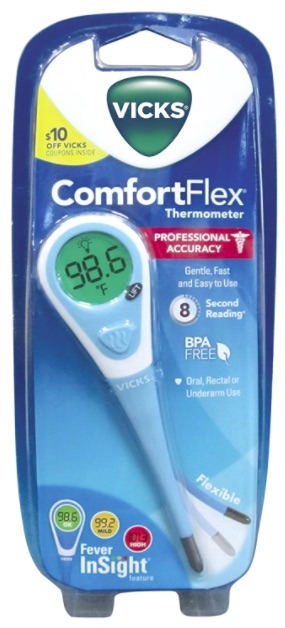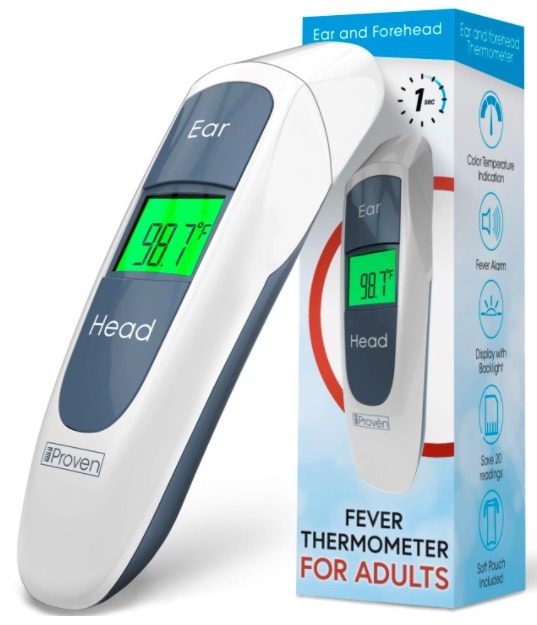Every time you visit a doctor’s office your temperature is taken. This is an easy way to check your vitals and to identify any ailments, fevers or illness. You can check your temperature often at home. But what is your body temperature? How should you read it? We’ve taken the time to answer many questions to help you better understand your body temperature.
We are all familiar with the idea that our body temperature should be 98.6°F or 37°C. This common knowledge is important to follow but there is more information available regarding your body temperature. This is important for older adults, young children and to prevent any emergency medical visits from being necessary.
What Is Your Body Temperature?
Reading your body temperature is a specific way to determine it is within a safe range. So what is your body temperature? You can read it to determine if you are too hot, too cold or just right.
If you are feeling hot, likely you will sweat. The sweat will help to cool your body. Conversely, if you are feeling cold, then you may shiver and help to produce heat. The main connection is how blood vessels work.
When your body temperature is hot then your blood vessels will widen and move the excess heat to your skin’s surface (leading to sweat). When your body temperature is cold your blood vessels will narrow and reduce the blood flow (starting the shiver).
These regulations of the body’s core temperature are what keep us all comfortable, safe and able to identify any changes. A change in temperature (below 95 or above 100.4) is an indication of something else influencing your temperature (fever, exposure, etc.).
Getting Older and Getting Colder
As we age our ability to regulate our body temperature becomes more challenging. The blood vessels (widening or narrowing) move to and from the skin. This can be due to how our bodies handle cold weather, regulate body heat and even your menstrual cycle. However, as we age, there is a decrease in:
- The amount of fat below the skin making it harder to keep the body warm
- The ability to sweat making it harder to keep the body cool
- The metabolic rate decreases leading to changes in energy consumption
What this means for you is maintaining your aging loved one’s body temperature becomes harder. It is ever more important to check their temperature often, especially if feeling ill or sick. This is to look out for signs of a fever, overheating, hypothermia or infection.
The Different Types of Thermometers
In searching for a thermometer for your aging parent you will come across several types. As examples, we have provided two different digital versions:

The Vicks thermometer will provide you with an accurate temperature for only a price of $16.99 and available online and in most drugstores. Some of the key features of using orally, rectally or under the arm include:
- 2-second readings
- Flexible tip for comfort
- BPA Free
- Readings in Fahrenheit or Celsius
Forehead and Ear Thermometer DMT-489 Black

- Calibrated for ear and temporal measurements
- Infrared scan-lens technology
- 1-second accurate readings
- Batteries and pouch are included
How to Properly Take Your Temperature
When using a digital thermometer, follow these easy-to-remember instructions. Before taking your temperature, try not to eat or drink anything for at least 5-minutes. When ready, use these steps:
- Wash and clean your thermometer and your hands.
- Place the thermometer tip under the tongue for an oral temperature reading (use your thermometer's directions if for your forehead or ear).
- Hold the thermometer in the same spot for about 40 seconds and take it at the same time of day if repeated.
- Wait until the thermometer makes a beep to indicate the reading is done
- Rinse the thermometer in cold water, clean it with alcohol and rinse again.
How to Read Your Temperature
When you take your temperature, it will likely fall within the normal range of 97.7-99.5°F. A fever is noticed when your temperature is above 99.5-100.9°F. If your temperature goes below 95.0°F, then it may be a sign of hypothermia. Talk with your physician if your temperature is high or low immediately to prevent any potential harm. Identifying even a slightly higher temperature can lead to quick fever-reducing actions.
What Can Impact Your Temperature
Some illnesses may make it harder for your body to stay warm. For older adults, some of the common illnesses you may see include:
- High blood pressure
- Parkinson’s
- Anemia
- Diabetes
- Thyroid issues
- Dementia (memory loss)
Keep in mind that any of these illnesses will impact your aging loved one’s temperature. This could impact each reading so be mindful, write it down and keep track.
Remember
Your body temperature is a critical vital sign. Contact your physician for proper medical advice if you or anyone in your house has a high body temperature (fever) and a headache, swelling of the throat, confusion or anything that seems out of the ordinary.


